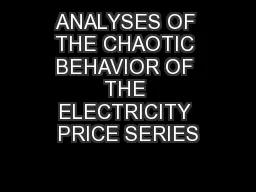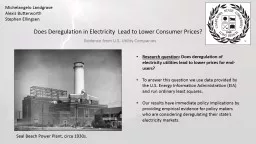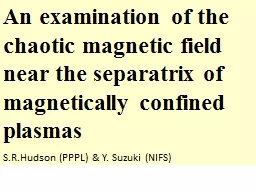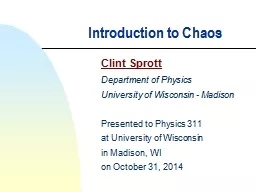PPT-ANALYSES OF THE CHAOTIC BEHAVIOR OF THE ELECTRICITY PRICE SERIES
Author : jane-oiler | Published Date : 2018-02-23
Radko Kříž University of Hradec Kralove Faculty of Science Radkokrizuhkcz Content Introduction Input data Methodology Results Conclusions Introduction Is the
Presentation Embed Code
Download Presentation
Download Presentation The PPT/PDF document "ANALYSES OF THE CHAOTIC BEHAVIOR OF THE ..." is the property of its rightful owner. Permission is granted to download and print the materials on this website for personal, non-commercial use only, and to display it on your personal computer provided you do not modify the materials and that you retain all copyright notices contained in the materials. By downloading content from our website, you accept the terms of this agreement.
ANALYSES OF THE CHAOTIC BEHAVIOR OF THE ELECTRICITY PRICE SERIES: Transcript
Download Rules Of Document
"ANALYSES OF THE CHAOTIC BEHAVIOR OF THE ELECTRICITY PRICE SERIES"The content belongs to its owner. You may download and print it for personal use, without modification, and keep all copyright notices. By downloading, you agree to these terms.
Related Documents














